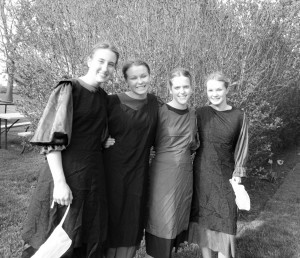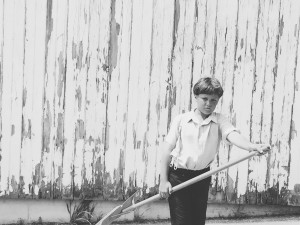Your childhood may have looked very different or even similar to an Amish childhood, depending on where you were born and raised. Here are three of the common differences between an urban and Amish childhood.
1- Chores
The Amish are known for their farms, fresh fruits and vegetables, and horse-and-buggies for a good reason.
 Many Amish live on farms and their day-to-day lives involve lots of those farm-related activities. Amish adults rise early to take care of the home or farm and their children are no exception. They are expected to help out around the house with cooking or cleaning, or outdoor chores like feeding the animals or gardening.
Many Amish live on farms and their day-to-day lives involve lots of those farm-related activities. Amish adults rise early to take care of the home or farm and their children are no exception. They are expected to help out around the house with cooking or cleaning, or outdoor chores like feeding the animals or gardening.
With the growth of urban life, though, the modern-day child doesn’t help with as many chores as the farm child.
Of course, lack of chores doesn’t mean the urban child is lazy; it simply means that the Amish lifestyle requires more from its children.
2- Dress
The Amish dress in traditional, modest apparel. Normal attire for women and girls consist of long sleeves, ankle length dresses in subtle, dark colors along with a head covering. Men and boys wear long-sleeved shirts with suspenders, pants, and a hat.
Amish Insight: Often, the mothers and older daughters make their families clothes by hand, fashioning durable outfits out of yards of fabric.
Unless for religious reasons, most people today don’t grow up wearing a specific wardrobe. This decision by the Amish to dress conservatively stems from their desire to stay humble before God.
3- Quiet
These days it’s not unusual for children as young as five years old to know how to use an iPhone or tablet, and to use it often. Technology has changed our society in both good and bad ways. Unfortunately, along with technology, our urban children’s worlds have become much more loud and flashy.
For Amish children, however, life is different.
It’s calm and quiet; most Amish don’t use technology until the teenage years of Rumspringa. Often, Amish children will play with each other or interact with their family more because of the lack of technology in their lives.
They live more in tune with the world around them; the sounds of nature – Summer crickets, farm animals or the melodic splash of Spring rain – are all familiar noises to them.
While the Amish childhood may differ from yours, remember our differences make us unique and interesting, even helpful to each other.
Each difference gives you the opportunity to study your own life and the reasons for your words or actions.
Our differences should not create disunity or disdain but rather an attitude of empathy and gratitude — for because of our differences, we now have a chance to learn from each other.



